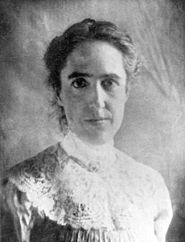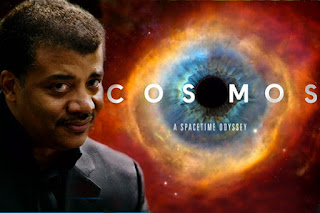nPostednon July 4, 2015
n
n
n
nThenAmerican astronomer Henrietta Swan Leavitt was born waaayyy back onnthis date in 1868, and yet she is the one who discovered an importantn“measuring stick” that allowed us to better understand thenenormity of the universe.
n
n
n
nAndnthis “measuring stick” was made of stars!
n
n
n
nDidnyou know that some stars do not shine steadily? Instead, some starsnseem to flicker or even to wildly fluctuate with brighter and thenndimmer light. The changes in brightness reflect eruptions within thenstar itself or the in-falling of material from a nearbyncompanion.
They are called variable stars.
n
n
n
n
n
n
nSomenvariable stars are called Cepheid variables. They pulsate at anregular pace, changing in both size and temperature. Their brightnessnvaries along with the size-and-temperature changes. And, it turnsnout, there is a strong direct relationship between a Cepheidnvariable’s luminosity and pulsation period. n
n
n
n
nBecausenof this, we can discover how far away a Cepheid variable star is. Wenmeasure its brightness and its pulsation period. Then we figure outnhow bright it SHOULD be, if we were near it. Voila! We can nowncompute how far away the Cepheid variable must be to make it appearnat the brightness we observe.
n
n
n
n
n
n
n
n
nItnis Leavitt who discovered the relationship between the luminosity andnperiod of Cepheid variables. Her discovery gave astronomers theirnfirst way of measuring the distance between the Earth and farawayngalaxies, and it was her discovery (and red shifts) that enablednEdwin Hubble to discover that the universe is expanding. And ofncourse, once we discovered the expansion of the universe, we werenable to reason that the universe must have started with a Big Bang.
n
n
n Leavittnwas born in Massachusetts. She attended Oberlin and Radcliffe Collegesnand then traveled in America and in Europe. During thosenpost-graduate travels, she got ill and lost her hearing. However, shenwas still able to get a job as a human “computer” working fornEdward Pickering at the Harvard College Observatory to measure andncatalog the brightness of stars in the observatory’s collection ofnphotographic plates.
Leavittnwas born in Massachusetts. She attended Oberlin and Radcliffe Collegesnand then traveled in America and in Europe. During thosenpost-graduate travels, she got ill and lost her hearing. However, shenwas still able to get a job as a human “computer” working fornEdward Pickering at the Harvard College Observatory to measure andncatalog the brightness of stars in the observatory’s collection ofnphotographic plates.
 Leavittnwas born in Massachusetts. She attended Oberlin and Radcliffe Collegesnand then traveled in America and in Europe. During thosenpost-graduate travels, she got ill and lost her hearing. However, shenwas still able to get a job as a human “computer” working fornEdward Pickering at the Harvard College Observatory to measure andncatalog the brightness of stars in the observatory’s collection ofnphotographic plates.
Leavittnwas born in Massachusetts. She attended Oberlin and Radcliffe Collegesnand then traveled in America and in Europe. During thosenpost-graduate travels, she got ill and lost her hearing. However, shenwas still able to get a job as a human “computer” working fornEdward Pickering at the Harvard College Observatory to measure andncatalog the brightness of stars in the observatory’s collection ofnphotographic plates.n
n
n
n
nHowndid Leavitt make her discovery? She made the assumption that all thenCepheid variable stars in the Magellanic Clouds were roughly the samendistance to the Earth. That’s sort of like saying that every mountainnand crater on the Moon is roughly the same distance from your house.nIt’s not completely true – some of the deepest craters are somentens of thousands of feet “farther away” from your house thannsome of the mountain tops on the Moon. But compared to the more thannone BILLION feet away that the moon is from Earth, that distance isnlike nothing. (The difference between the lowest and highest spots onnthe Moon is only about 0.0047% of the distance between the Earth andnthe Moon.)
n
n
n
 |
| Large Magellanic Cloud – it’s really a small, relatively nearby galaxy. |
n
nSo,nin the same way, we can talk about a group of stars that are very farnaway from the Earth – such as all the stars in another galaxy –nbeing roughly the same distance away from us. The Large MagellanicnCloud is about 160,000 light years away from us, and the SmallnMagellanic Cloud is about 200,000 light years away from us. And eachnlight year is about 1,000,000,000,000 miles or kilometers away. Sonthat makes the Magellanic Clouds some 160,000,000,000,000,000 ton200,000,000,000,000,000 miles away!
n
n
n
n(Prettynfar!)
n
n
n
nInterestinglynenough, I discovered that recent, more exact studies of thenMagellanic Clouds have resulted in fine-tuning Leavitt’s assumption.nWe now think that, based on more exact measurements of the light ofnCepheid variables, the Large Magellanic Cloud is tipped 35 degrees,nso that the northeast part of the galaxy is slightly closer to ourngalaxy than the southwest part. That’s what I love about science: wenjust keep getting better and better at discovering and describingnreality!
n
n
n
nInbet you have already guessed this part: Leavitt got less recognitionnfor her very important discovery than we would like. Someone tried tonnominate her for a Nobel Prize, but that prize is never awarded afternsomeone’s death, and at that point Leavitt had already died ofncancer. Hubble, who enjoyed quite a bit of fame, always said thatnLeavitt should’ve gotten a Nobel for her work. n
n
n
n
nSo,nnot too much fame. Did Leavitt earn fortune? Well, she had moneynbecause of her family, so at first she wasn’t even paid for her worknfor the Harvard Observatory; later she earned about 30 cents an hourn(woo-hoo!). n
n
n
n
n Leavitt has gotten SOME credit, now that she is long gone. Therenis a Leavitt asteroid and a Leavitt crater on the moon. And Leavitt’snstory has been shared in books and in Neil deGrasse Tyson’s Cosmos.nI think maybe all of us should spread the word – Henrietta SwannLeavitt made a great contribution to astronomy despite being deaf (ANDnfemale, back when that was a hurdle to overcome)!
Leavitt has gotten SOME credit, now that she is long gone. Therenis a Leavitt asteroid and a Leavitt crater on the moon. And Leavitt’snstory has been shared in books and in Neil deGrasse Tyson’s Cosmos.nI think maybe all of us should spread the word – Henrietta SwannLeavitt made a great contribution to astronomy despite being deaf (ANDnfemale, back when that was a hurdle to overcome)!
 Leavitt has gotten SOME credit, now that she is long gone. Therenis a Leavitt asteroid and a Leavitt crater on the moon. And Leavitt’snstory has been shared in books and in Neil deGrasse Tyson’s Cosmos.nI think maybe all of us should spread the word – Henrietta SwannLeavitt made a great contribution to astronomy despite being deaf (ANDnfemale, back when that was a hurdle to overcome)!
Leavitt has gotten SOME credit, now that she is long gone. Therenis a Leavitt asteroid and a Leavitt crater on the moon. And Leavitt’snstory has been shared in books and in Neil deGrasse Tyson’s Cosmos.nI think maybe all of us should spread the word – Henrietta SwannLeavitt made a great contribution to astronomy despite being deaf (ANDnfemale, back when that was a hurdle to overcome)!n
n
n
n
n
nAlsonon this date:
n
n
n
n
n
n
n
n
n
n
n
n
n
nBoomnBox Parade Day in Willimantic, CT
n
n
n
n
n
n
n
n
n
n
n
n
n
n
n
n
n
n
n
n
n
n
n
n
n
n
nIndependencenDay in the USA
n
n
n
n
n
n
n
n
n
n
n
n
n
n
nIndivisiblenDay
n
n
n
n
n
n
n
n
nInternationalnCherry Pit-Spitting Day
n
n
n
n
n
n
n
n
n
n
n
n
n
n
n
n
n
n
n
n
n
n
n
n
nLenTour de France Day
n
n
n
n
n
n
n
n
n
n
n
n
n
n
n
n
nPlannahead:
nPlannahead:
n
n
n
nChecknout my Pinterest boards for:
n
- n
-
nJulyn holidays
n
-
nJulyn birthdays
n
-
nHistoricaln anniversaries in July
n
n
n
n
n
nAndnhere are my Pinterest boards for:
n
- n
-
nAugustn holidays
n
-
nAugustn birthdays
n
-
nHistoricaln anniversaries in August
n
n
n
n
n
n
n
n
nn











